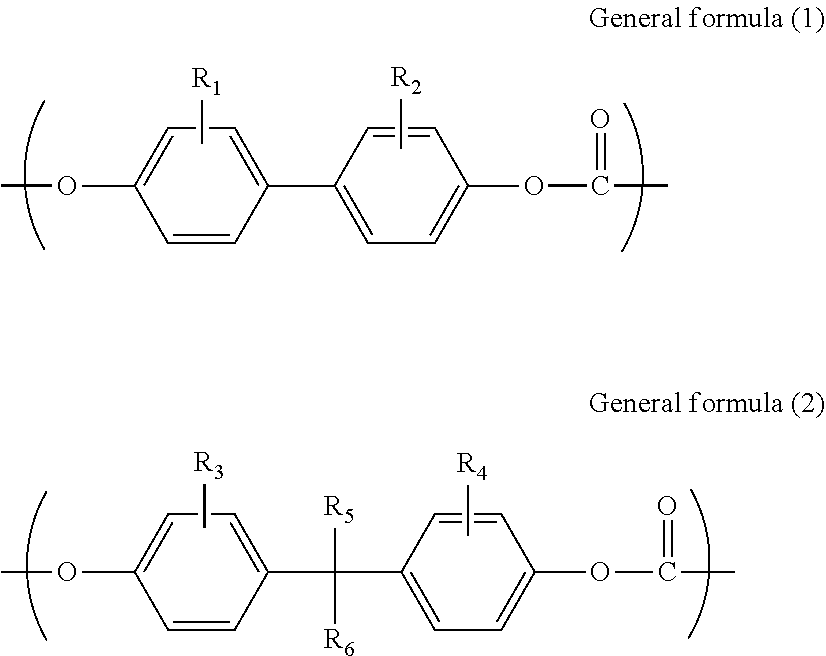Aromatic polycarbonate oligomer solid
- Summary
- Abstract
- Description
- Claims
- Application Information
AI Technical Summary
Benefits of technology
Problems solved by technology
Method used
Image
Examples
example 1
[0115]83.8 g (0.45 mol) of 3,3′-dimethyl-4,4′-biphenol, 102.7 g (0.45 mol) of 2,2-bis(4-hydroxyphenyl)propane, and 134.9 g (0.63 mol) of diphenyl carbonate were charged into a four-necked flask equipped with a thermometer, a stirrer, a cooler, and after the inside of a reaction vessel was replaced with nitrogen, 7.6 g of a 0.08% cesium carbonate aqueous solution was added at 90° C. After the temperature was raised to 200° C., the reaction was carried out at a degree of pressure reduction adjusted to 1.3 kPa for 3 hours. Further, after the temperature was raised to 220° C., the reaction was carried out at a degree of pressure reduction adjusted to 0.5 kPa for 2 hours while distilling out the phenol formed. The low molecular weight component of 177.0 g of the final reaction solution obtained was 12.4% (high performance liquid chromatography area %).
[0116]Subsequently, a solution prepared by dissolving 50.1 g of the obtained final reaction solution in 100.1 g of methyl isobutyl ketone ...
PUM
| Property | Measurement | Unit |
|---|---|---|
| Density | aaaaa | aaaaa |
| Weight | aaaaa | aaaaa |
| Density | aaaaa | aaaaa |
Abstract
Description
Claims
Application Information
 Login to View More
Login to View More - R&D
- Intellectual Property
- Life Sciences
- Materials
- Tech Scout
- Unparalleled Data Quality
- Higher Quality Content
- 60% Fewer Hallucinations
Browse by: Latest US Patents, China's latest patents, Technical Efficacy Thesaurus, Application Domain, Technology Topic, Popular Technical Reports.
© 2025 PatSnap. All rights reserved.Legal|Privacy policy|Modern Slavery Act Transparency Statement|Sitemap|About US| Contact US: help@patsnap.com



